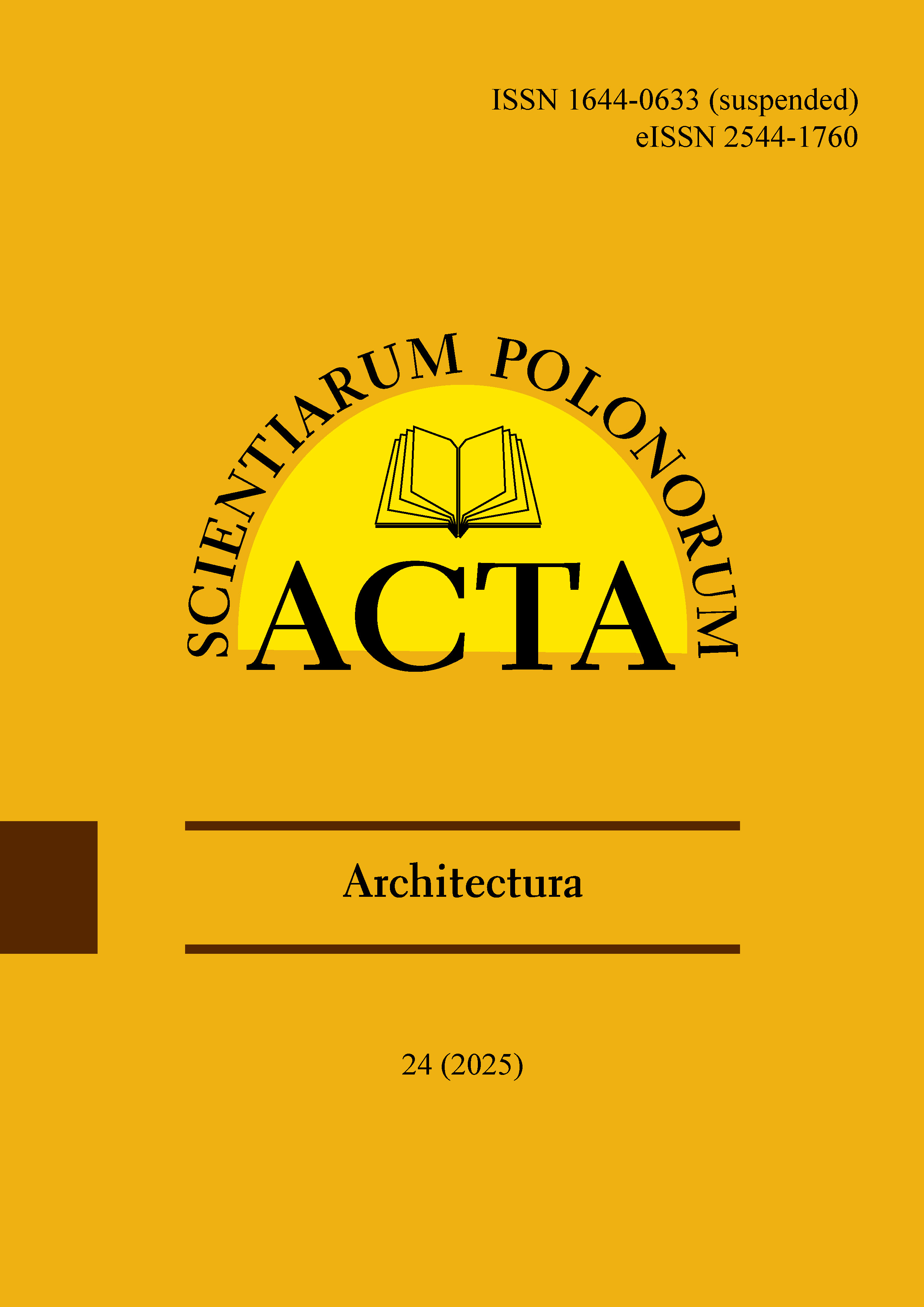Main Article Content
The article characterises the features of compressed concrete deformation under the action of long-term loads. The aim of the research presented in the article was to establish the analytical dependence of determining the long-term strength of compressed concrete. It hypothesises that the specific potential energy of its ultimate deformation (destruction) is invariant and independent of the concrete loading mode. Other researchers’ critical analyses have confirmed the functional dependence of the level of long-term strength of compressed concrete not only from its standardised elastic-plastic characteristics but also from the concrete strain rate. The proposed methodology evaluation for determining the long-term strength of compressed concrete is reduced to a comparison of the relevant theoretical calculated results with the various researchers’ published experimental data.
Article Details
Ashrabov, A. A. & Zaytsev, Y. V. (1982). Elements of fracture mechanics of concrete. Tashkent: Ukituvchi.
Awad, M. E. & Hilsdorf, H. K. (1971). Strength and Deformation Characteristics of Plain Concrete Subjected to High Repeated and Sustained Loads. Urbana, IL.: University of Illinois at Urbana-Champaign. Retrieved from https://www.ideals.illinois.edu/items/14427
Bezgodov, I. M. (1996). O dlitelnoi prochnosti betona [About the long-term strength of concrete], Beton i zhelezobeton, 4, 23‒25.
Comité Euro-International du Béton [CEB], (1993). CEB-FIP Model Code 1990. Design code (CEB-FIP MC 1990). London: Thomas Telford Ltd. Retrieved from http://www.tocasa.es/zona2/CEB_FIP_model_code_1990_ing.pdf
Empelmann, M. & Javidmehr, S. (2020). Evaluation of concrete compression failure under high sustained loads. Proceedings of the fib Symposium, 22, 827‒834.
Fédération Internationale du Béton [FIB], (2012). Model Code 2010. Final draft. Vol. 2. (FIB MC 2010). Lausanne: Federal Institute of Technology (EPFL). Retrieved from https://vdoc.pub/download/fib-66-model-code-2010-final-draft-volume-2-122qcq34ikio
Graf, O. & Brenner, E. (1937). Versuche mit Betonkörpern, die einer dauernd wirkenden Druckbelastung ausgesetzt waren. Bauingenieur, 19/20, 237‒270. Retrieved from http://delibra.bg.polsl.pl/Content/23272/BCPS_24910_1937_Der-Bauingenieur-19.pdf
Han, N. (1996). Time Dependent Behaviour of High Strength Concrete (doctoral thesis). Delft University of Technology, Delft. Retrieved from https://repository.tudelft.nl/record/uuid:ab8b4cfa-0c72-4e84-8d17-f5841715972e
Holovata, Z., Neutov, S. & Surianinov, M. (2021). Modeling of the stress-strain state of reinforced concrete beams under prolonged load action. IOP Conference Series: Materials Science and Engineering, 1162, 012004. https://doi.org/10.1088/1757-899X/1162/1/012004 (Crossref)
Iravani, S. & MacGregor, J. G. (1998). Sustained load strength and short-term strain behavior of high-strength concrete. ACI Materials Journal, 95 (5), 636‒647. (Crossref)
Krishan, A., Rimshin, V., Erofeev, V., Kurbatov, V. & Markov, S. (2015). The Energy Integrity Resistance to the Destruction of the Long-Term Strength Concrete. Procedia Engineering, 117, 211‒217. https://doi.org/10.1016/j.proeng.2015.08.143 (Crossref)
Ngab, A. S., Slate, F. O. & Nilson, A. H. (1981). Microcracking and Time-Dependent Strains in High Strength Concrete. ACI Journal, 78, 262‒268. https://doi.org/10.14359/6923 (Crossref)
Prokopovich, I. E. (1978). Osnovi prikladnoi lineinoi teorii polzuchesti [Fundamentals of applied linear theory of creep]. Kyiv: Vyshcha shkola.
Raupov, C. & Malikov, G. (2023). Creep in expanded clay concrete at different levels of stress under compression and tension. E3S Web of Conferences, 365, 02008. https://doi.org/10.1051/e3sconf/202336502008 (Crossref)
Raupov, C., Karimova, A., Zokirov, F. & Khakimova, Y. (2021). Experimental and theoretical assessment of the long-term strength of lightweight concrete and its components under compression and tension, taking into account the macrostructure of the material. E3S Web of Conferences, 264, 02024. https://doi.org/10.1051/e3sconf/202126402024 (Crossref)
Romashko, V. M. (2021). General model and the mechanics of concrete elements and structures deformation. IOP Conference Series: Materials Science and Engineering, 1021, 012026. https://doi.org/10.1088/1757-899X/1021/1/012026 (Crossref)
Romashko, V. & Romashko, O. (2019a). Energy resource of reinforced concrete elements and structures for the deformation-force model of their deformation. IOP Conference Series: Materials Science and Engineering, 708, 012068. https://doi.org/10.1088/1757-899X/708/1/012068 (Crossref)
Romashko, V. & Romashko, O. (2019b). Fundamentals of the General Theory of Resistance of Reinforced Concrete Elements and Structures to Power Influences. Materials Science Forum, 968, 534‒540. https://doi.org/10.4028/www.scientific.net/MSF.968.534 (Crossref)
Romashko, O. & Romashko, V. (2019c). Model of multilevel formation of normal cracks in reinforced concrete elements and structures. IOP Conference Series: Materials Science and Engineering, 708, 012069. https://doi.org/10.1088/1757-899X/708/1/012069 (Crossref)
Romashko, V. & Romashko-Maistruk, O. (2022). Strength resource calculation of the reinforced concrete elements according to the energy criterion. Procedia Structural Integrity, 36, 269‒276. https://doi.org/10.1016/j.prostr.2022.01.034 (Crossref)
Romashko-Maistruk, O. & Romashko, V. (2024). Model of concrete deformation under the action of dynamic loads. Procedia Structural Integrity, 59, 352‒359. https://doi.org/10.1016/j.prostr.2024.04.050 (Crossref)
Rüsch, H. (1956). Versuche zur Bestimmung des Einflusses der Zeit auf Festigkeit und Verformung [Experiments to Determine the Influence of Time on Strength and Strain]. IABSE Kongressbericht, 5, 237‒244. Retrieved from https://www.e-periodica.ch/digbib/view?pid=bse-cr-001%3A1956%3A5%3A%3A870#870
Rüsch, H. (1960). Researches Toward a General Flexural Theory for Structural Concrete. ACI Journal, 57 (1), 1‒28. Retrieved from https://www.e-periodica.ch/digbib/view?lang=de&pid=bse-cr-001%3A1956%3A5%3A%3A1584#1585
Sell, R. (1959). Investigation into the Strength of Concrete Under Sustained Load. RILEM Bulletin, 5, 1‒13.
Shank, J. R. (1949). Plastic Flow of Concrete at High Overload. ACI Journal, 45 (2), 493‒498. https://doi.org/10.14359/12157 (Crossref)
Smadi, M. M., Slate, F. O. & Nilson, A. H. (1985). High-, Medium-, and Low-Strength Concretes Subject to Sustained Overloads ‒ Strains, Strengths, and Failure Mechanisms. ACI Materials Journal, 82 (5), 657‒664. https://doi.org/10.14359/10376 (Crossref)
Stöckl, S. (1972). Strength of Concrete under Uniaxial Sustained Loading. SP-34 Concrete for Nuclear Reactors, 1, 313‒326.
Tasevski, D., Fernández, Ruiz M. & Muttoni, A. (2018). Compressive Strength and Deformation Capacity of Concrete under Sustained Loading and Low Stress Rates. Journal of Advanced Concrete Technology, 16, 396‒415. https://doi.org/10.3151/jact.16.396 (Crossref)
Yashin, A. V. (1969). Deformatsii betona pod dlitelnim vozdeistviem visokikh napryazhenii i yego dlitelnoe soprotivlenie pri szhatii [Deformation of concrete under prolonged exposure to high stresses and its long-term compressive resistance]. In A. A. Gvozdev (Eds), Osobennosti deformatsii betona i zhelezobetona i ispolzovanie EVM dlya otsenki ikh vliyaniya na povedenie konstruktsii (pp. 38‒76). Moskva: Stroiizdat.
Zaitsev, Yu. V. (1972). Razvitie treshchin v tsementnom kamne i betone pri kratkovremennom i dlitelnom szhatii [Development of cracks in cement stone and concrete under short-term and long-term compression]. Beton i zhelezobeton, 11, 41‒43.
Downloads

This work is licensed under a Creative Commons Attribution-NonCommercial 4.0 International License.

